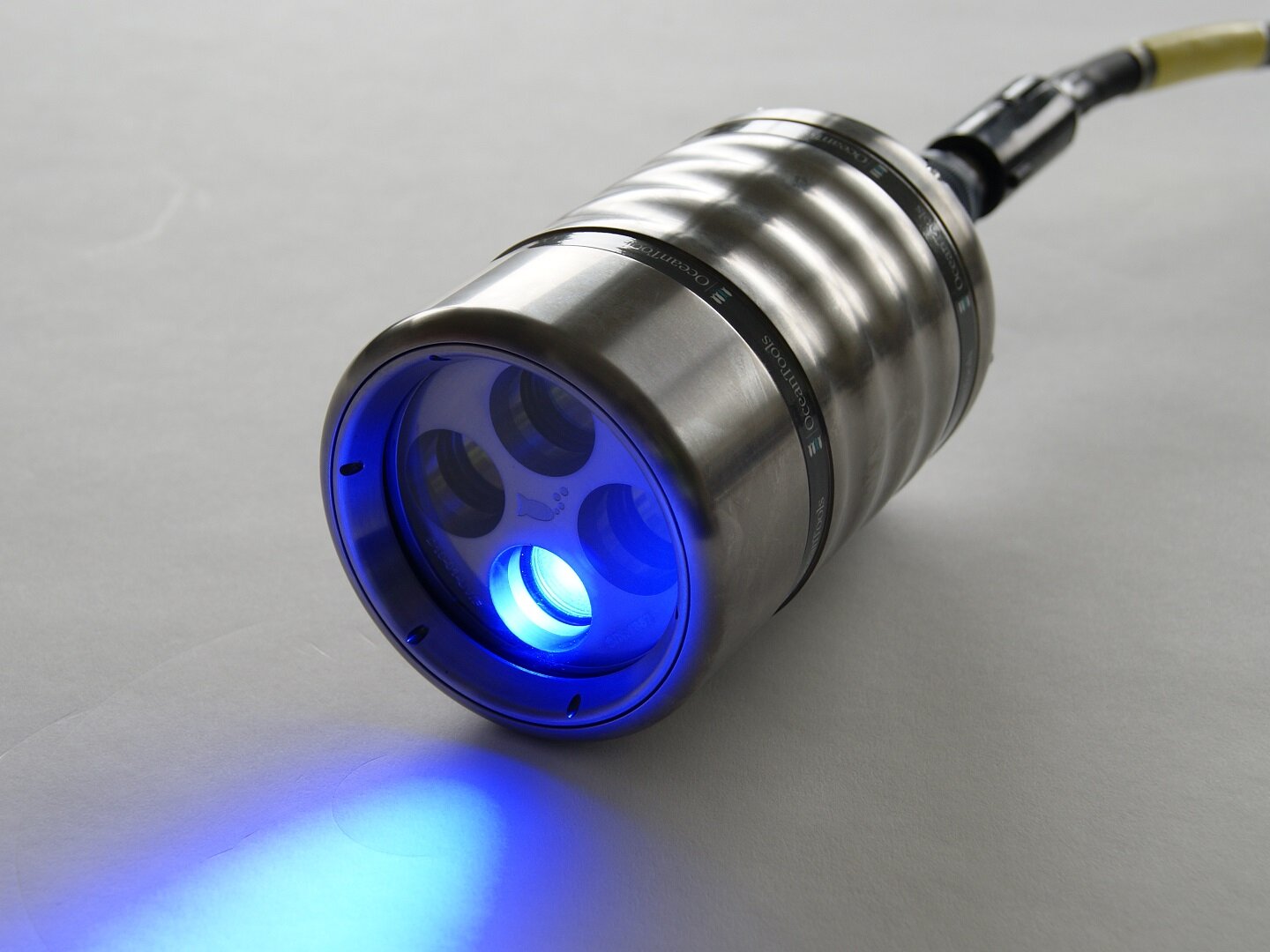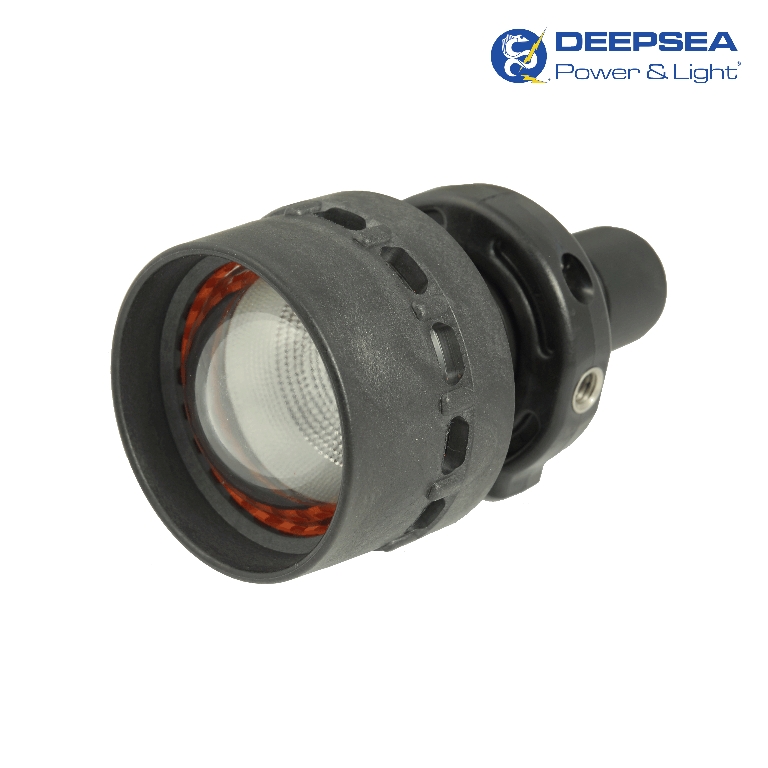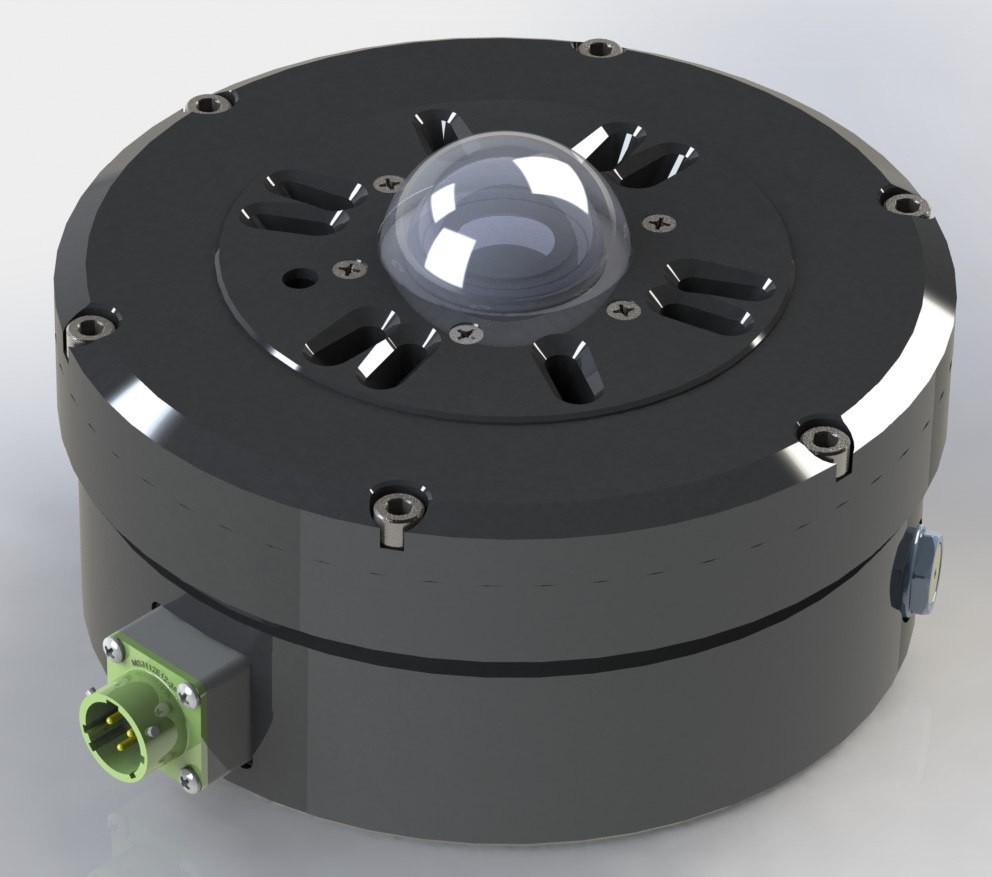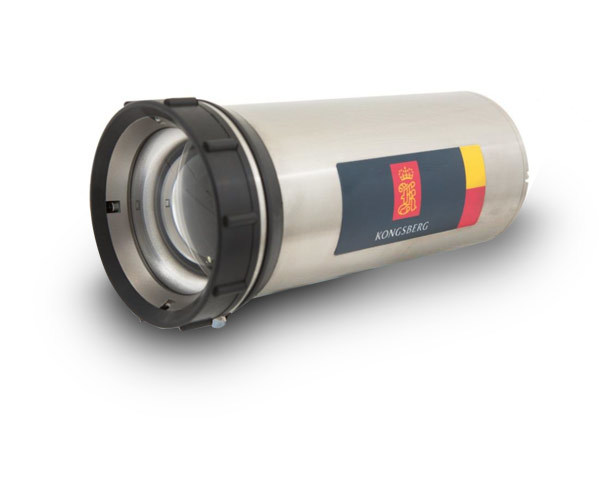BlueZone partners with over 50
world-leading original equipment
manufacturers and systems providers
D8 DyeTector
Dual channel subsea dye detection system
OceanTools D8 DyeTector is an advanced subsea leak, dye and cement detector developed with two sets of optical components to detect two different types of dye using a single compact device. One set of optics is activated at a time, so that rhodamine or ultraviolet dyes can be detected in isolation.
High-power LED light is focused through lenses and filters to create a concentrated beam that is tuned to a specific wavelength to cause maximum fluorescence of the dye. Detection electronics employ clever light amplification technology to amplify even the smallest amounts of fluorescence from the agitated dye molecules.
The powerful ROV mounted D8 DyeTector uses the same technology capable of detecting single photons of light as the single channel D7 DyeTector, which enables it to detect down to single digit parts per billion of dye dissolved in water. This makes it ideal for detecting the very smallest of leaks or dye dosed cement.
Advanced ambient light suppression technology allows the DyeTector to be used in high levels of background light and also means the ROV’s lights do not need to be turned off.
Key Features:
-
Rhodamine and Ultraviolet dye detection
-
Focused beam and filtered high intensity LEDs
-
Light amplification and photon detection technology
-
Compact alternative to using separate detectors
-
4000m standard depth rating
Subsea infrastructure
A DyeTector may be used to detect leaks from subsea infrastructure such as manifolds, wellheads or pipelines if a suitable dye has been added to the infrastructure fluids. Pipeline or flow line pressure testing can be monitored by the DyeTector if dye impregnated fluids are used.
The video footage below, provided by our customer UBOC in Baku, shows the discharging of the 20” pipeline hydro test water in the Caspian Sea at a depth of 60m. A successful leak test was undertaken at stable pressure and temperature. Shown in the video is the purge of the dye solution from the pipeline, carried out to check the correct functioning of the D8 DyeTector. The excitation of the dye is clearly visible at the point where the purge water intersects with the UV light.
Cement detection
A DyeTector may also be used during casing cementing operations to detect cement returns if a tracer dye is added to either the seawater spacer or to the cement itself. Unlike pH meters which rely upon the cement passing over them, a DyeTector can detect cement from a distance of several metres depending on the concentration of dye.
Detection dyes
The D8 DyeTector is designed to excite and detect C-Dye 530 (Rhodamine) and C-Dye 370 (Ultraviolet) but can also be used to detect the following:
-
Rhodamine dyes such as B275, RX9022, Pelagic 100 Pink
-
Ultraviolet dyes such as RX9026E, Pelagic 100, Champion Cleardye, Castrol HT2
OceanTools DyeTector D8 in operation
List of Detectable Dyes and Fluids
For more information about OceanTools D8 DyeTector, Contact the team at BlueZone.
Key Features
Up to 25-hour mission duration
Speeds up to 4.2 knots
Increased module payload capacity
Search and recovery
Hydrography
Deep sea mineral exploration
Marine & Fisheries research
Product Enquiry
Related products
DeepSea Power & Light's Multi SeaLite is their most popular halogen light and has been in production for over 20 years.
Read moreSS455 Hyperbaric IR HD Video Camera
The SS455 Hyperbaric Video Camera provides a 12MP 187° field of view (FOV) with digital zoom, double, and single panorama, or quad view for superior situational video surveillance. Motion detection,...
Read moreRelated Articles
Ahead of the Tide: BlueZone’s Landmark IndoPAC 2025 Showcase
Celebrating 25 Years of Sovereign Capability The Indo Pacific International Maritime Exposition stands as the region’s premier showcase for commercial maritime and naval defence innovation—bringing together leaders from defence,...
Read MorePartnering for Performance: BlueZone Supports Kraken Robotics in Advancing KATFISH Capability
BlueZone Group to become Kraken’s Australian Sales Representative, Enhancing Sovereign Support for Cutting-edge Synthetic Aperture Sonar Systems We are thrilled to announce BlueZone Group have signed an agreement...
Read MoreSeeByte and BlueZone Group Forge Strategic Alliance to Strengthen Australian Naval Capabilities
BlueZone Group is proud to announce our appointment as the official Australian representative for SeeByte, a UK-based leader in advanced maritime defence and uncrewed systems technology. This strategic partnership marks...
Read More



